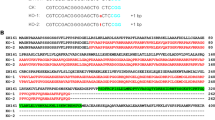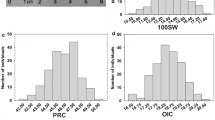Abstract
Pyruvate orthophosphate dikinase (PPDK) is a component of glycolysis to mediate endosperm energy charge by adjusting the ratio of ATP to ADP and AMP that proposed to balance the flow of carbon into starch, protein, fatty acid and amino acid biosynthesis. However, these were inconsistent with the first report of a T-DNA insertional knockout mutant of the rice PPDK gene (flo4) showed that rice with inactivated PPDK gene failed to produce a opaque seeds. Therefore, the PPDK might have multifaceted functions in grain filling stage, which in some ways might depend on the direction of the reversible catalysis. Suweon 542 is a rice (Oryza sativa L.) mutant developed from Oryza sativa ssp. japonica cv. Namil. Suweon 542 has a milky-white floury endosperm suitable for dry filling, with low starch damage, low grain hardness, and fine flour particle size. The mutant locus on chromosome 5 controls the floury endosperm phenotype of Suweon 542. Fine mapping of this locus is required for efficient breeding of rice germplasm suitable for dry milling. In this study, whole genome of Suweon 542 and Milyang 23 were re-sequenced using Illumina HiSeq 2500. Co-segregation analysis of F3:4 family populations derived from Suweon 542/Milyang 23 was performed using eight CAPS markers and phenotypic evaluation of the endosperm. The target region was mapped to a 33 kb region and identified to encode cytosolic pyruvate orthophosphate dikinase protein (cyOsPPDK). A G→A SNP in exon 8 of cyOsPPDK resulting in a missense mutation from Gly to Asp at amino acid position 404 was responsible for the floury endosperm of Suweon 542. qRT-PCR experiments revealed that FLO4-4 was expressed to a considerably higher level in Suweon 542 than in Namil during the grain filling stage. Overall, fine mapping of FLO4-4 and candidate gene analysis provided further insight into the floury endosperm of rice, and reveal a novel SNP in cyOsPPDK gene can affect the floury endosperm phenotype through active PPDK gene during grain filling stage.




Similar content being viewed by others
References
Aoyagi K, Bassham JA (1984) Pyruvate orthophosphate dikinase mRNA organ specificity in wheat and maize. Plant Physiol 76(1):278
Aoyagi K, Bassham JA et al (1984) Pyruvate orthophosphate dikinase gene expression in developing wheat seeds. Plant Physiol 75(2):393
Ashida K, Iida S et al (2009) Morphological, physical, and chemical properties of grain and flour from chalky rice mutants. Cereal Chem 86(2):225–231. https://doi.org/10.1094/CCHEM-86-2-0225
Ashida K, Araki E et al (2010) Flour properties of milky-white rice mutants in relation to specific loaf volume of rice bread. Food Sci Technol Res 16(4):305–312. https://doi.org/10.3136/fstr.16.305
Chastain CJ, Heck JW et al (2006) Posttranslational regulation of pyruvate, orthophosphate dikinase in developing rice (Oryza sativa) seeds. Planta 224(4):924. https://doi.org/10.1007/s00425-006-0259-3
Choi Y, Sims GE et al (2012) Predicting the functional effect of amino acid substitutions and indels. PLOS ONE 7(10):e46688. https://doi.org/10.1371/journal.pone.0046688
Gallusci P, Varotto S et al (1996) Regulation of cytosolic pyruvate, orthophosphate dikinase expression in developing maize endosperm. Plant Mol Biol 31(1):45–55. https://doi.org/10.1007/BF00020605
He J, Shao G et al (2017) Fine mapping and candidate gene analysis of qTAC8, a major quantitative trait locus controlling tiller angle in rice (Oryza sativa L.). PLOS ONE 12(5):e0178177. https://doi.org/10.1371/journal.pone.0178177
Heo S, Lee SM et al (2013) Effect of dry- and wet-milled rice flours on the quality attributes of gluten-free dough and noodles. J Food Eng 116(1):213–217. https://doi.org/10.1016/j.jfoodeng.2012.11.017
Hong H, Moon H et al (2011) A lodging tolerant, opaque rice cultivar ‘Seolgaeng’. Korean J Breed Sci 43(6):532–537
Hong H-C, Choi H-C et al (2012) A lodging-tolerance and dull rice cultivar ‘Baegjinju’. Korean J Breed Sci 44(1):51–56
Hormdok R, Noomhorm A (2007) Hydrothermal treatments of rice starch for improvement of rice noodle quality. LWT Food Sci Technol 40(10):1723–1731. https://doi.org/10.1016/j.lwt.2006.12.017
Kang HG, Park S et al (2005) White-core endosperm floury endosperm-4 in rice is generated by knockout mutations in the C4-type pyruvate orthophosphate dikinase gene (OsPPDKB). Plant J 42(6):901–911. https://doi.org/10.1111/j.1365-313X.2005.02423.x
Kaushik RP, Khush GS (1991) Genetic analysis of endosperm mutants in rice Oryza sativa L. Theor Appl Genet 83(2):146–152. https://doi.org/10.1007/BF00226243
Kawahara Y, de la Bastide M et al (2013) Improvement of the Oryza sativa Nipponbare reference genome using next generation sequence and optical map data. Rice 6(1):4. https://doi.org/10.1186/1939-8433-6-4
Leewatchararongjaroen J, Anuntagool J (2016) Effects of dry-milling and wet-milling on chemical, physical and gelatinization properties of rice flour. Rice Sci 23(5):274–281. https://doi.org/10.1016/j.rsci.2016.08.005
Meyer AO, Kelly GJ et al (1982) Pyruvate orthophosphate dikinase from the immature grains of cereal grasses. Plant Physiol 69(1):7
Mo Y-J, Jeung J-U et al (2013) Agronomic and genetic analysis of Suweon 542, a rice floury mutant line suitable for dry milling. Rice 6(1):37. https://doi.org/10.1186/1939-8433-6-37
Neff MM, Neff JD et al (2002) dCAPS, a simple technique for the genetic analysis of single nucleotide polymorphisms: experimental applications in Arabidopsis thaliana genetics. Plant J 14(3):387–392. https://doi.org/10.1046/j.1365-313X.1998.00124.x
Ngamnikom P, Songsermpong S (2011) The effects of freeze, dry, and wet grinding processes on rice flour properties and their energy consumption. J Food Eng 104(4):632–638. https://doi.org/10.1016/j.jfoodeng.2011.02.001
Nishio T, Iida S (1993) Mutants having a low content of 16-kDa allergenic protein in rice (Oryza sativa L.). Theor Appl Genet 86(2):317–321. https://doi.org/10.1007/BF00222095
Peng C, Wang Y et al (2014) FLOURY ENDOSPERM6 encodes a CBM48 domain-containing protein involved in compound granule formation and starch synthesis in rice endosperm. Plant J 77(6):917–930. https://doi.org/10.1111/tpj.12444
Qiao Y, Lee S-I et al (2010) Fine mapping and candidate gene analysis of the floury endosperm gene, FLO(a), in rice. Mol Cells 29(2):167–174. https://doi.org/10.1007/s10059-010-0010-6
Ryoo N, Yu C et al (2007) Knockout of a starch synthase gene OsSSIIIa/Flo5 causes white-core floury endosperm in rice (Oryza sativa L.). Plant Cell Rep 26(7):1083–1095. https://doi.org/10.1007/s00299-007-0309-8
She K-C, Kusano H et al (2010) A novel factor FLOURY ENDOSPERM2Is involved in regulation of rice grain size and starch quality. Plant Cell 22(10):3280
Shih F, Daigle K (1999) Oil uptake properties of fried batters from rice flour. J Agric Food Chem 47(4):1611–1615. https://doi.org/10.1021/jf980688n
Shin YS, Park CS et al (2009) Article: characteristics of endosperm starch of the rice mutant lines induced by sodium azide. Korean J Breed Sci 41(2):84–91
Tong L-T, Gao X et al (2015) Effects of semidry flour milling on the quality attributes of rice flour and rice noodles in China. J Cereal Sci 62:45–49. https://doi.org/10.1016/j.jcs.2014.12.007
Tong L-T, Zhu R et al (2017) Soaking time of rice in semidry flour milling was shortened by increasing the grains cracks. J Cereal Sci 74:121–126. https://doi.org/10.1016/j.jcs.2017.01.011
Torbica A, Hadnađev M et al (2010) Rheological, textural and sensory properties of gluten-free bread formulations based on rice and buckwheat flour. Food Hydrocoll 24(6):626–632. https://doi.org/10.1016/j.foodhyd.2010.03.004
Yang Y, Tao W-Y (2008) Effects of lactic acid fermentation on FT-IR and pasting properties of rice flour. Food Res Int 41(9):937–940. https://doi.org/10.1016/j.foodres.2007.10.011
Zhang L, Ren Y et al (2016) FLOURY ENDOSPERM7 encodes a regulator of starch synthesis and amyloplast development essential for peripheral endosperm development in rice. J Exp Bot 67(3):633–647. https://doi.org/10.1093/jxb/erv469
Acknowledgements
This work was supported by a Grant from the Next-Generation BioGreen 21 Program (Plant Molecular Breeding Center No. PJ01113902), Rural Development Administration, Republic of Korea.
Funding
This study was funded by Next-Generation BioGreen 21 Program (Plant Molecular Breeding Center No. PJ01113902), Rural Development Administration, Republic of Korea.
Author information
Authors and Affiliations
Corresponding author
Ethics declarations
Conflict of interest
The authors declare that they have no conflict of interest.
Ethics approval
This article does not contain any studies with human participants or animals performed by any of the authors.
Informed consent
Additional informed consent was obtained from all individual participants for whom identifying information is included in this article.
Additional information
Communicated by S. Hohmann.
Electronic supplementary material
Below is the link to the electronic supplementary material.
Rights and permissions
About this article
Cite this article
Wang, H., Mo, YJ., Im, DE. et al. A new SNP in cyOsPPDK gene is associated with floury endosperm in Suweon 542. Mol Genet Genomics 293, 1151–1158 (2018). https://doi.org/10.1007/s00438-018-1446-1
Received:
Accepted:
Published:
Issue Date:
DOI: https://doi.org/10.1007/s00438-018-1446-1




